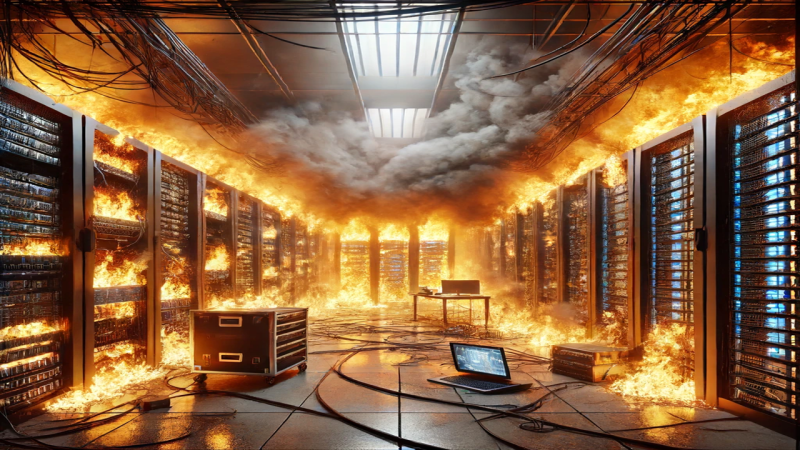Understanding the Key Factors of Heat Pump Performance
Heat pumps have emerged as a vital technology for efficient heating and cooling across various industries. At Cooltherm, we understand the intricacies that go into designing and implementing these systems. Although heat pump performance is most notably determined by way of its compressor, other parts of the system play a significant role – choosing an incorrect set up could, ultimately, cost you of the savings afforded by installing them.
The Role of the Compressor
The compressor is often touted as the heart of the heat pump due to its crucial role in the system's operation. Its primary function is to manage the flow rate of the refrigerant, keeping it circulating through the system at optimal speed and pressure.
Essentially, the compressor determines the amount of heat energy that can be transferred into the chosen refrigerant and, consequently, how effectively the pump can alter temperatures in heating or cooling applications. Because of its pivotal role in the overall efficiency and performance of the heat pump, the compressor typically represents a substantial portion of the system's cost, usually constituting 20% to 35% of the total hardware expenditure. Furthermore, the design and technology of compressors are often protected by significant intellectual property, highlighting their importance and complexity in the heat pump industry.
Heat Exchangers
Heat exchangers are another crucial component of heat pumps, playing a vital role in the system's overall performance. These components include the condenser and evaporator, each facilitating the transfer of heat between different mediums. The condenser is responsible for releasing the absorbed heat from the refrigerant to the surroundings, while the evaporator absorbs heat from the environment to be carried by the refrigerant.
The technology behind heat exchangers is well-established, having been developed and refined over many years. The maturity of this component, therefore, allows for significant customisation to meet the specific demands of various applications – particularly in large-scale industrial or commercial settings. Engineers can tailor the design and materials of heat exchangers to optimise efficiency, durability, and performance based on the unique requirements of each installation.
Recently, plate-and-shell heat exchangers have gained popularity due to their innovative design that combines the efficiency and compactness of plate heat exchangers with the robustness and reliability of shell-and-tube heat exchangers. Unlike traditional plate heat exchangers, plate-and-shell models do not require gaskets, which can be points of failure or maintenance concerns. This design not only enhances the heat exchanger's efficiency but also improves its overall durability and reliability, making it an attractive option for demanding applications.
The Importance of Control Software
Control software should not be overlooked when determining the correct heat pump setup, especially in industrial applications where precision and reliability are paramount. Unlike residential or commercial heat pumps, which typically have more lenient performance criteria, industrial systems are subject to stringent requirements for the coefficient of performance (COP). The COP is a critical metric that measures the efficiency of the heat pump by comparing the amount of heating or cooling provided to the energy consumed.
In industrial settings, maintaining a high COP is essential for both operational efficiency and cost-effectiveness. This metric is continuously monitored to ensure that the system operates within the specified performance standards. Failure to meet COP standards can result in significant penalties, impacting the overall performance and financial viability of the operation. As a result, having precise and reliable control over the heat pump's functions is crucial.
To achieve this, sophisticated control systems and advanced digital capabilities are indispensable. These systems include remote monitoring, which allows operators to oversee the heat pump's performance in real-time from any location. This capability ensures that any deviations from expected performance can be quickly identified and addressed. Additionally, predictive maintenance uses data analytics and machine learning to anticipate potential issues before they become critical, reducing downtime and maintenance costs.
Mature Technology with Room for Optimisation
Industrial heat pumps represent a mature technology, having benefited from decades of development and applied solutions. Over the years, the fundamental principles and designs of these systems have been refined to a point where they are highly reliable and efficient. Given this extensive history of improvement, significant cost reductions from further advancements along the traditional learning curve are unlikely. The primary innovations and efficiencies have already been realised, leaving limited room for dramatic cost-saving breakthroughs purely from technological evolution.
By adopting heat pumps more widely across various sectors, economies of scale will be achieved, leading to lower hardware costs. Modularisation and standardisation of components and systems play a crucial role in this process. Standardised modules can be produced in larger quantities, reducing manufacturing costs and simplifying installation and maintenance. This approach not only cuts costs but also allows for greater flexibility in adapting systems to different industrial needs.
In addition to cost-saving measures, the implementation of smart control systems and optimisation strategies can significantly improve the performance and operational flexibility of industrial heat pumps. Advanced control software can fine-tune the operation of the heat pump, keeping it running at optimal efficiency under varying conditions. This can lead to improved energy savings and more consistent performance. Furthermore, smart control systems can facilitate predictive maintenance, identifying potential issues before they result in system failures. This proactive approach reduces downtime and maintenance costs, contributing to lower overall operating expenses.
Why Choose Cooltherm?
At Cooltherm, we combine expertise in key components like compressors, heat exchangers, and control software with innovative approaches to optimisation and cost reduction. Our comprehensive solutions are tailored to meet the unique requirements of each project, delivering efficient and reliable heat pump systems.
Cooltherm stands ready to provide both the equipment and the knowledge necessary to implement the best heat pump solution for your business. Contact us today to learn how we can help you achieve superior heating and cooling performance with our state-of-the-art technology.
Related News

Cooltherm Welcomes Chris Selby as New Commercial Sales Director

The Importance of Cooling in Summer
